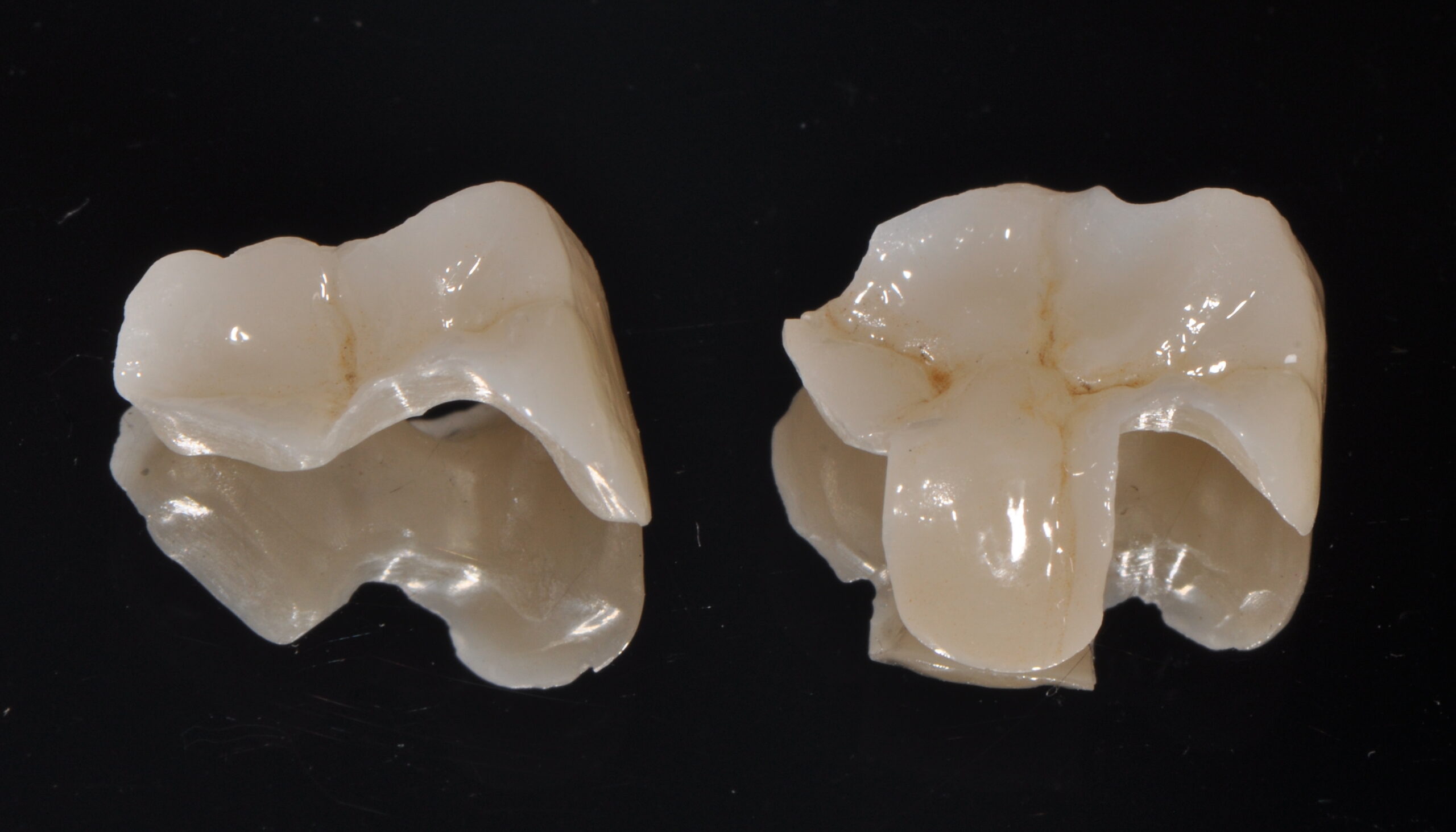Q: I recently broke an old silver filling on a back tooth. My dentist suggested replacing it with an Onlay filling made of porcelain. What is an Onlay and why will it take more than one visit to be made?
Thank you for reaching out to us.
Amalgam fillings—commonly called silver fillings—are actually a mixture of metals, consisting of liquid elemental mercury and a powdered alloy composed of silver, tin and copper. They have been used for many years to restore teeth due to their strength and durability. However, they often require shaving off more tooth structure to be placed, and for some patients they don’t meet their esthetic needs.
Advances in dental materials and adhesive technologies now enable dentists to offer high strength, tooth colored restorations as alternatives to dental amalgam. Porcelain Onlays are a great example; they can be used to replace a large portion of tooth structure lost to fracture, decay or erosion. Other types of partial coverage restorations include Inlays and Overlays, which differ in the amount of tooth structure they replace.
Some of the reasons why your dentist may propose to restore your teeth with porcelain restorations:
- Medium to large size cavities where a large portion of the tooth has been lost
- Minimally invasive treatment of cracked teeth
- Replacing tooth surface lost to acidic erosion
- In very specific cases, they can be used as an alternative to full coverage restorations (crowns)
- If you suffer from bruxism (clenching and grinding), it may be advised to use porcelain fillings to provide increased resistance to mastication forces
Onlays are often made in a laboratory setting. This process takes additional time and will typically require two visits. During the first visit, the old filling and decayed portion of the tooth is removed and an impression (mold) of the tooth is made. The Onlay is custom-made using this impression, and the final product will be color matching and highly esthetic.

At Milano Dental Studio we take impressions using a digital scanner (paste free impression), and the file is then sent digitally to a dental laboratory in Bergamo, Italy where the porcelain Onlay is fabricated. After taking the impression, we will place a temporary filling on the tooth. Two weeks later, we remove it and permanently cement the porcelain Onlay to the tooth.
Indirect restorations can last many years. It is important to maintain proper dental hygiene at home and keep up with your biannual dental visits to check all of your teeth and fillings. During your check-ups, x-rays can be taken as needed to aid in these assessments.
We hope you found this information useful.
Al Dente readers, please continue to send your dental questions our way!













